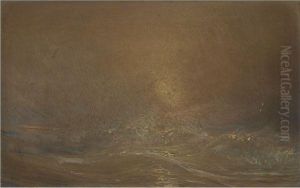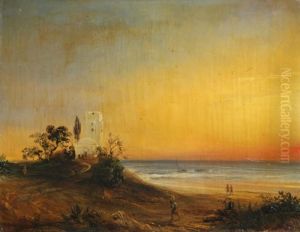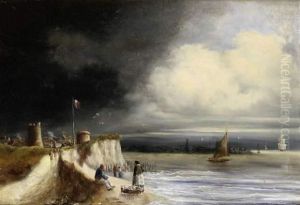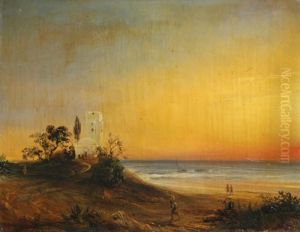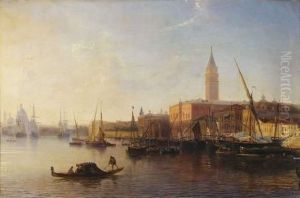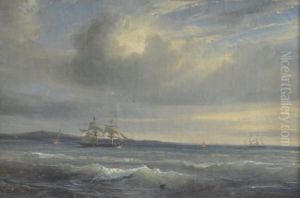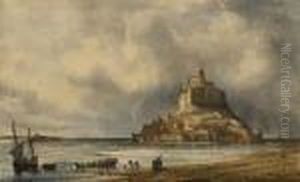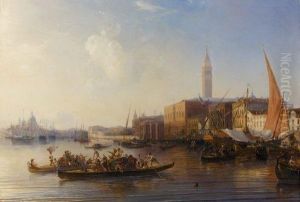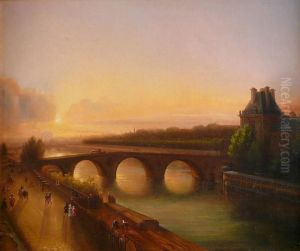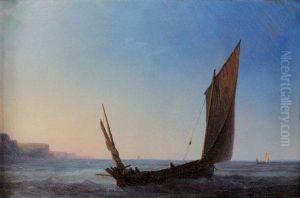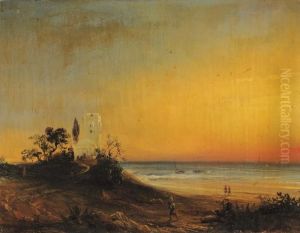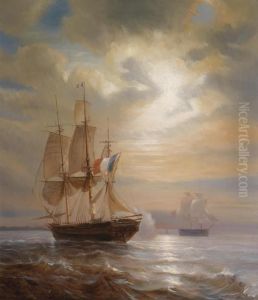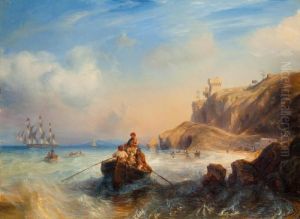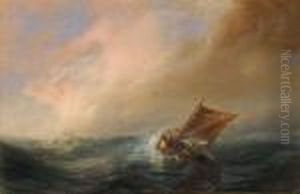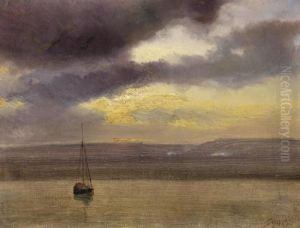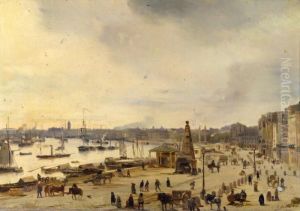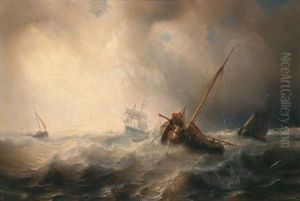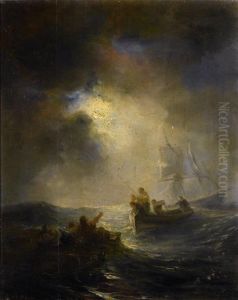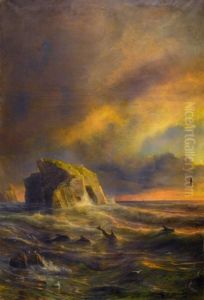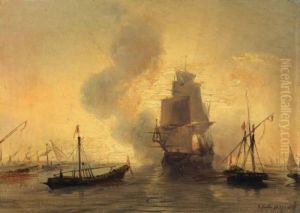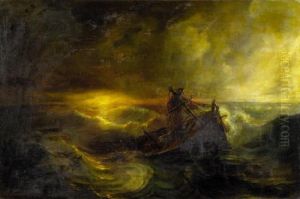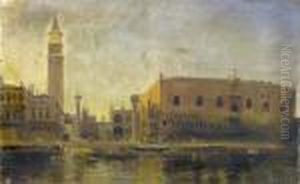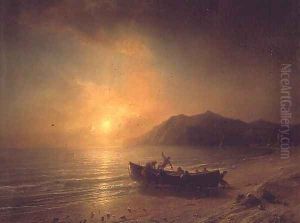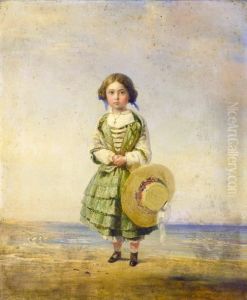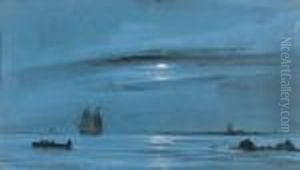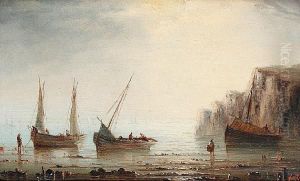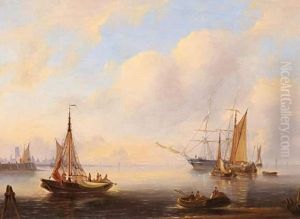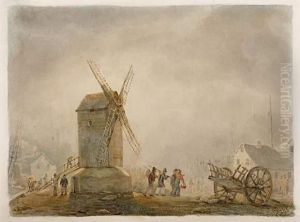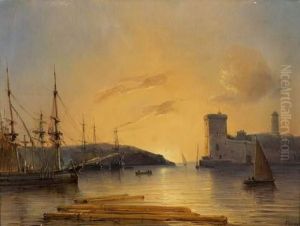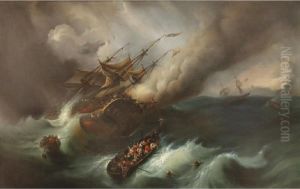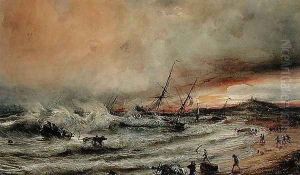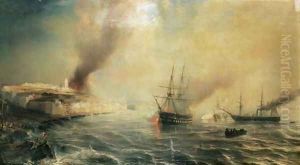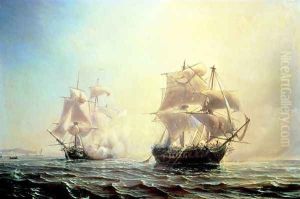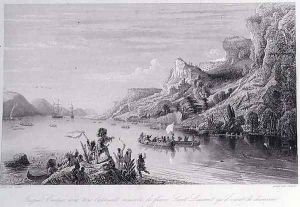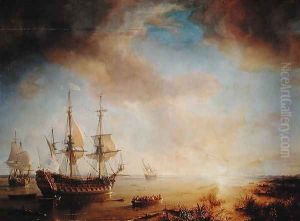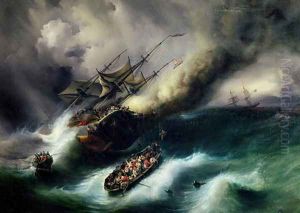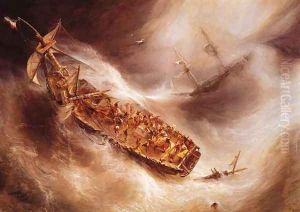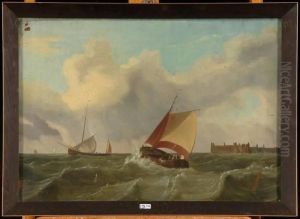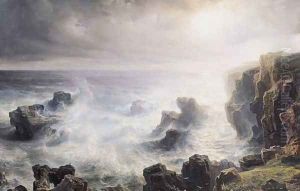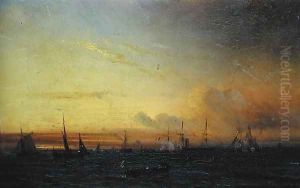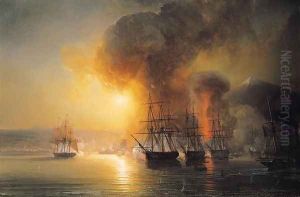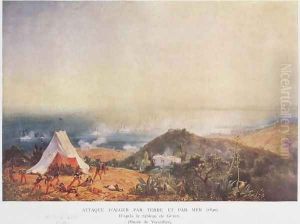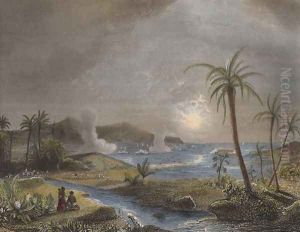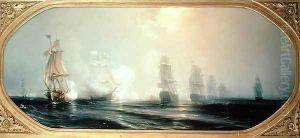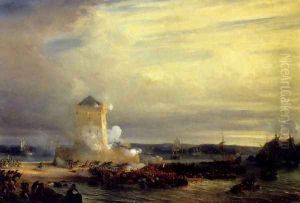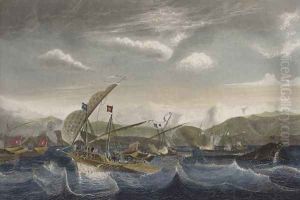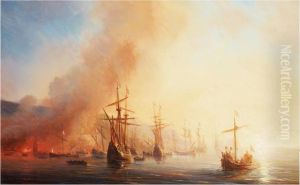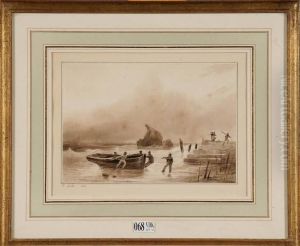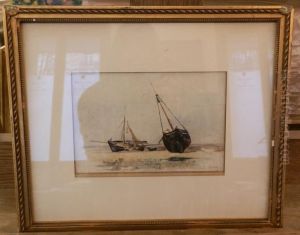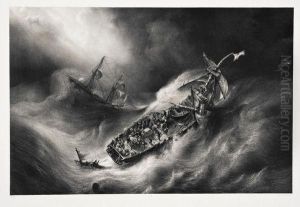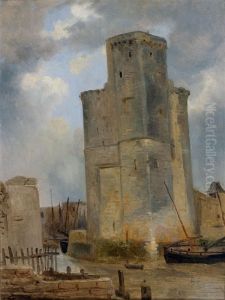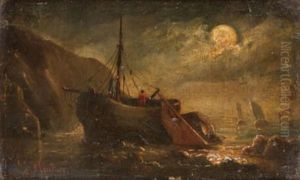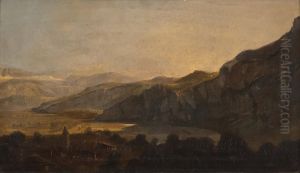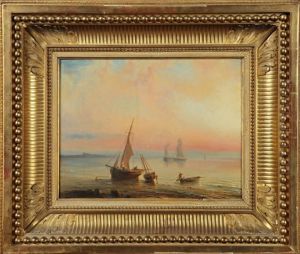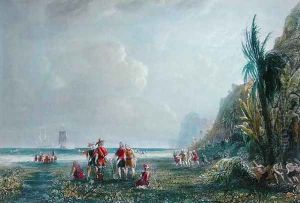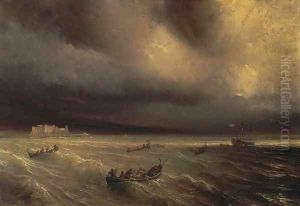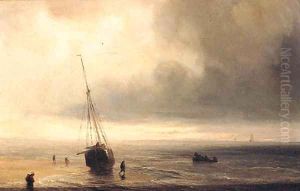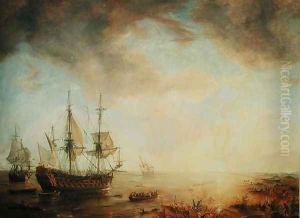Theodore Gudin Paintings
Jean Antoine Théodore Géricault, known as Théodore Gudin, was a renowned French painter of the 19th century, celebrated for his maritime paintings. Born on August 15, 1802, in Paris, Gudin showed a proclivity for art at a young age. He studied under several prominent artists, including Anne-Louis Girodet-Trioson and Antoine-Jean Gros, both of whom were influential in shaping his early style.
Gudin's career took a significant turn when, at the age of 18, he participated in the naval expedition to Greece in 1821, which provided him with firsthand experience of the sea and naval life. These experiences deeply influenced his artistic focus, leading him to specialize in marine subjects. Upon his return to France, Gudin's sea-themed paintings began to garner attention, and he quickly gained recognition as a leading marine artist.
His works were notable for their realism and attention to the nuances of maritime atmosphere. He painted a vast array of seascapes, naval battles, and port scenes, capturing the drama and grandeur of the ocean. Gudin's ability to depict the interplay of light and water earned him widespread acclaim, and his paintings became highly sought after.
In 1830, Gudin was awarded the Legion of Honor by King Louis-Philippe of France, a testament to his growing prestige. Throughout his career, he received numerous commissions from the French government, including the request to produce a series of seascapes for the historical galleries in the Palace of Versailles.
Gudin's influence extended beyond his own work. He was instrumental in the establishment of the Société Nationale des Beaux-Arts, which played a crucial role in the promotion of French art during the 19th century. Despite facing competition from the emerging Realist and Impressionist movements, Gudin's reputation as a master of marine painting remained unchallenged throughout his life.
Théodore Gudin passed away on April 11, 1880, leaving behind a legacy as one of the foremost French marine painters. His works continue to be celebrated for their technical skill and evocative portrayal of the sea, and they hold a significant place in the annals of 19th-century French art.
